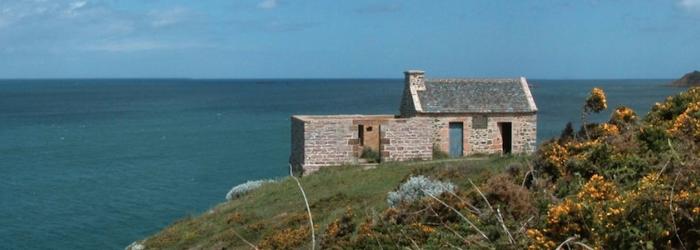![]() This "How to" is a copy of my post from Insanelymac
This "How to" is a copy of my post from Insanelymac
I Began first to install Leopard with iAtkos 7 DVD. It was a first try and iAtkos DVD was an easier method for newbie like me.
I have learned a lot and have applied my findings to the 10.6.3/10.6.5 installation.
Here are my notes, for Snow Leopard and of course valid for leopard. I have tried to describe more in detail, things Newbies like me, need to look for, to install OSX on a PC.
ACER Aspire 5741G.
- Bios vers: V1_06.
- Core i5 CPU M 450 @ 2.40GHz.
- Motherboard HM55.
- Graphic ATI Mobility Radeon HD 5470.
- Audio Realtek ALC272X.
- HDMI Manhattan Audio.
Wireless BCM43225 802.11b/g/n. Replaced with a Wireless Dell 1510.- Ethernet NetLink BCM57780 Gigabit.
- WebCam Namuga Co.,Ltd.
- HD ATA Hitachi 320GB.
- SD SanDisk Cruzer Micro.
- RAM 4GB.
Snow Leopard steps I have followed (summary).
- iAtkos s3.
- Multibeast.
- Combo update 10.6.5.
- Post installation.
- Trackball.
- Audio.
- Speedstep with Chameleon RC5.
What works and what doesn't.
- Keyboard with trackball and numeric pad (w/ Kext).
- Graphic w/o QE (works w/o Kext).
- Speedstep works (w/ Kext, Ssdt & Dsdt table).
- Sound w/o HDMI (w/ Kext).
- Wireless doesn't work, works with USB Sitcom WL-365 (Driver for 10.5 works).
- Webcam recognized within Photo Booth but doesn't work.
- CD/DVD works (OOB).
- Card reader works (OOB).
- USB works (w/ Kext).
- sleep doesn't work (not yet…).
Installation.
USB Stick.
First at all, I have clone the iAtkos s3 (or iAtkos V7 if you want Leopard) on an USB stick. The installation is faster from USB stick than from a cd or dvd.
How to
In Disk Utility select your USB device.
- Go to tab partition.
- Select 1 partition.
- Click on option and select GUID partition table.
- Ok and Apply.
From Disk Utility Click on Restore tab.
- Drag the iAtkos image on source .
- Drag your USB on destination.
- Click on restore.
Now we need a bootlooder to make our USB stick bootable.
I have done it with "PC EFI 10.1". It should works with Chameleon but I do not try it.
- Google for "PC EFI 10.1".
- Download it.
- Double click on the package.
- Select USB as target disk with the change location button.
- Click on install and wait end of the process.
Now the iAtkos s3 is ready for use on USB stick.
Dual Boot
I have chosen to kept windows 7 and the ability to restore windows from the first partition.
I needed only to reduced the size of the windows partition and create a new one for OSX.
How to.
I use a GParted live cd. It is free and it is a fantastic partitions non-destructive resizer.
- Download a GParted or Ubuntu live CD (google it).
- Burn the image on a CD.
- Boot your Pc from the fresh burned CD.
- Resize/reduce the windows partitions.
- Create a new partition.
- Format only the new partition in HFS+ format.
- Exit from GParted.
- Eject CD.
OSX Installation from iAtkos s3.
Because of my above choice, my disk partition table stayed the original one, a MBR partition table. For Leopard it is not an issue but for Snow Leopard, the installation disk need to be patched.
Good news, iAtkos s3 is already patched for us  .
.
Boot from the USB stick.
- At boot prompt press F2 to check your bios configuration.
- Make sure SATA Mode is AHCI Mode.
- Go to the boot tab and set the USB at the top of the list with F6.
Acer bios V1.06 has not so much option so press F10 and save the changes.
Now OSX is booting from the USB stick.
- Select The iAtkos icon and type "busratio=18" without quote (the command will appear on the bottom of the screen).
- (please choose the correct ratio according this table).
- Select language.
I have formatted again my partition, only for safe purpose. Menu Utilities => Disk utility.
- Choose Mac Extended (Journaled) HFS+ format.
- Hit erase.
- Exit Disk Utility.
- Click to continue.
- Select the OSX partition.
- Click to customize.
Here you can choose the bootloader, patch, drivers etc…
- I have chosen Chameleon V2 RC4 (The bootloader has never be installed correctly for me).
- Patched:
- Left as proposed (default).
- Drivers:
- Sound: choose only one: Voodoo HDA e.g.
- PS/2: Apple PS/2 one, works for me with 10.5.4 and 10.6.3 (with basic function).
- Laptop hardware:
- Battery.
- Leave other drivers unselected for the first try.
- Click on Ok and install.
The installation should end with successfully installed.
The computer will reboot (don't forget busratio).
If the computer stuck on the apple icon or goes in a infinite boot loop the mach_kernel was probably not installed.
- Reboot again on the installation USB disk:
- Click on Utilities menu and choose terminal.
- Type df (to identified your disk path).
- Copy the path of your OSX volume (select it and copy with alt C).
- Type cp mach_kernel “path of your OSX disk” (past the path copied above without quote).
- Enter and exit.
- Quit Mac Installer.
- Reboot (don't forget busratio).
- This time it should be ok .
- If not try to type busratio=18 -v (verbose) to identify where the process stuck and fix the issue.
- Configure your account and login.
- Once configured, OSX will open .
- From your desktop, open the OSX combo from your choice (download it from Apple official page) and install it.
- Before rebooting Install multibeast
Multibeast configuration
- Easybeast.
- System utility all.
- OSX86 software all.
IMPORTANT: only for 10.6.5 trash the ATI driver from System/Library/Extensions (S/L/E).
Reboot (don't forget busratio=18).
Post installation.
Edit com.apple.Boot.plist.
- In the finder click on "Go" menu and choose "Go to folder".
- Type /Extra.
- In this folder drag the com.apple.Boot.plist file on your desktop.
- Open the file with text edit or Property List editor.
- Insert these lines:
<key>Kernel Flags</key>
<string>busratio=18</string>
<key>GraphicsEnabler</key>
<string>Yes</string>
<key>Graphics Mode</key>
<string>1366x768x32</string>
At reboot you will not have to enter busratio any more and your display configuration will be in accordance with your screen.
Check Kext.
You can find all Kext in my Lion step by step as they are almost all same.
In /Extra/Extensions or in /System/Library/Extensions/ you should have at least:
- ElliottForceLegacyRTC.kext.
- EvOreboot.kext.
- fakesmc.kext.
- VoodooBattery.kext.
- disable.kext.
- NullCPUPowerManagement.kext .
- ApplePS2Controller.kext.
- IO80211Family.kext.
A step further in post installation.
Bootloader.
I Install Chameleon-2.0-RC5-r653 to get benefit of the new features.
- Double click on the package.
- Before clicking on install choose customize.
- Choose.
- boot0 selected
- Themes selected
- Utility selected
- PrefPanel (only for snow leo) selected but leave options below unselected
Sound.
I have modified the IOPCIMatch value in the Plist of the Voodoo Kext with my sound card Device ID.
All instruction for the "how to" are in Voodoohda Driver from Projectosx
To extract the exact hardware data, you can use SIW (System Information for Windows) or better with Ubuntu Live CD with the help of the great script "hackintosh-hardware-analyser-1.0.9.sh" written by Hoob from Darwinx86
this script is a big help to extract dsdt and ssdt table too. Only the acpidump seems to fail. So I have installed it manually before running the script.
Use this package acpidump_20071116-1_i386.deb (google it)
Extract HW information and ACPI table.
- Boot from Ubuntu Live CD.
- Choose the option Try it.
- Configure Internet.
- Install the acpidump_20071116-1_i386.deb package.
- Launch terminal.
- Enter bash hit space.
- Drag the script on the terminal after the space.
- Hit enter and wait.
The script will create a folder with your HW information, DSDT and SSDT table.
Keyboard Trackpad.
To get vertical and horizontal scrolling capability, I installed this package.
VoodooPS2Controller-0.98-installer.pkg from here.
Prior remove all PS2 Kext:
- ApplePS2Controller.kext.
- ACPIPS2Nub.kext.
Speedstep with Chameleon RC5.
One great feature with this Chameleon package is to enable native speedstep.
- Chameleon RC5 is already installed.
- Rename all your SSDT files: SSDT-1 SSDT-2 etc.
- Drop your dumped SSDT files in the invisible /Extra folder.
- Remove disable.kext and NullCPUPowerManagement.kext.
- In system preference select Chameleon and enable Generate P-states, Generate C-states and force HPET.
- Open com.apple.Boot.plist and add manually:
<key>DropSSDT</key>
<string>Yes</string>
- Save.
- Open your DSDT file with DSDTSE (google it) and check whether your HPET declaration match with the proposed fix (number 2 in the select list).
- Compile Dsdt and click on install The dsdt file, will be installed in /Extra folder.
- Edit your SMBIOS.plist in extra folder as follow:
<key>SMboardproduct</key>
<string>MacBookPro6,1</string>
<key>SMcputype</key>
<string>1537</string>
<key>SMfamily</key>
<string>MacBook Pro</string>
<key>SMproductname</key>
<string>MacBookPro6,1</string>
(SMcputype 1537 for i5; 2305 for i3).
- Reboot.
Check whether the speedstep works with MSR tool (MSR works only in 32 bytes).
To do.
Enable sleep/hibernation.
Keep Enjoying OSX  .
.
Issues and solutions.
In case of Kernel Panic.
- Repair disk permissions often help. boot with appropriate flag:
boot flag
boot -x (safe mode)
boot -s (terminal)
boot -v (verbose)
boot -f (ignore cache)
For each extensions Kext change (add, remove or edition).
Drag the extensions folder on Kext Utility app.
enter your password and wait till the process end.
If the computer stuck on the apple icon or goes in a infinite boot loop the mach_kernel is probably not properly installed.
- reboot again on the installation USB disk.
- Click on Utilities menu and choose terminal.
- Type df (to identified your disk path).
- Copy the path of your OSX volume (select it and copy with alt C).
- Type cp mach_kernel “path of your OSX disk” (past the path copied above without quote).
- Enter and exit.
- Quit Mac Installer.
- Reboot (don't forget busratio).
Kernel Panics which happen during the mounting if Disk Images (.DMG) are caused not having the correct matched seatbelt.kext for your kernel (Source).
You can correct the Disk Mounting issue by matching your kernel with the proper seatbelt.kext build.
If you have the 9.5.0 kernel you will need the Seatbelt.kext from 10.5.5.
If you have the 9.6.0 kernel you will need the Seatbelt.kext from 10.5.6.
If you have the 9.7.0 kernel you will need the Seatbelt.kext from 10.5.7.
If you have the 9.8.0 kernel you will need the Seatbelt.kext from 10.5.8.
Check your kernel version by opening Terminal and typing:
uname -a
Message "Hibernate image is too old by xxx, use forcewake=y to override".
Solution from karacho_ak in this topic.
- In MacOsX open the Terminal and type:
sudo pmset hibernatemode 0
sudo rm /var/vm/sleepimage
- Reboot and have a look. Your above described Message should gone.
Hope this post will help future 5741G owners 




























